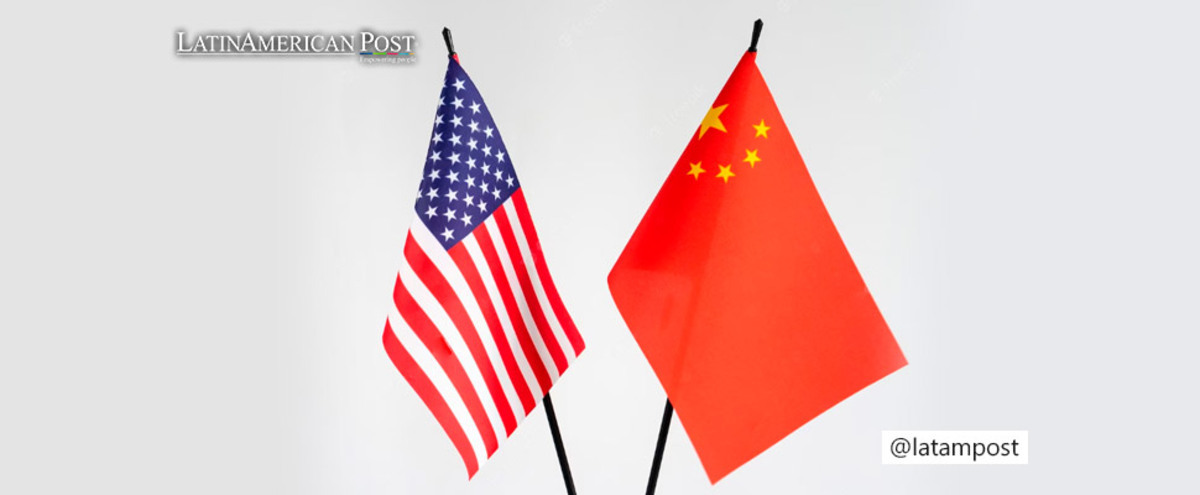U.S. Allies Against China
Faced with the development and growth of China as a global superpower, the United States has found strategic allies to contain the Asian giant's expansionist intentions.

Photo: Freepik
LatinAmerican Post | Santiago Gómez Hernández
Escucha este artículo
Leer en español: Los aliados de Estados Unidos contra China
Currently, the world is witnessing China's growth as a global superpower. Today, it is one of the most potent nations economically and militarily. Its gigantic population has been its most excellent tool to position itself as a threat to U.S. dominance on the planet. So much so that recently, many fear a possible conflict between these two superpowers due to China's expansionist intentions, especially on its eastern coasts.
The main focus of potential clashes between the United States and China is over the island of Taiwan (also known as Formosa). This archipelago in the East China Sea is considered an inseparable part of other countries. However, Taiwan also has a close relationship with the United States, so a possible invasion or forced annexation by Beijing could lead to a significant conflict. Nevertheless, the United States understands the threats it faces in the East to maintain its global hegemony, and that is why it has found alliances in several countries neighboring China that can serve to contain China's military aspirations.
The Old Acquaintances
The United States' main allies in the East are old acquaintances. In addition to Taiwan, Japan and South Korea also stand out. Both countries have military support treaties with the United States and serve as military bases.
For example, Japan has the most significant number of U.S. military bases globally (42), even more than Germany (40). In third place is South Korea, which allows the United States and these countries to maintain close and active military coordination.
In 2022, there were 57,300 U.S. troops in Japan and 28,500 in South Korea. These are members that not only serve as a deterrent against China but also against the other nuclear power in the area, North Korea.
After World War II, when the Allies (France, the United Kingdom, the Soviet Union, the United States, and China) defeated Italy, Germany, and Japan, the Asian island took on a pacifist constitution. Japan had reduced its military spending as a promise, and the other countries guaranteed its protection, so much so that the Treaty of Cooperation and Mutual Security between the two nations commits the signatories to defend each other in the event of an attack.
However, in recent years, Japan has increased military spending exponentially. Recently, Japanese Prime Minister Fumio Kishida said his country will increase its military spending to 2% of its GDP by 2027. This is also in response to the growing armament of its hostile neighbors, such as North Korea and China.
You can read: The Violent Protests in France are Not Because of their Migratory Present
South China Sea
Beyond Taiwan, there is another area of high tension in which China has great expansionist intentions. This is the South China Sea, located east of Indochina and south of the giant Beijing. Historically, China built rights in the sea south of its beaches, closer to Vietnam, the Philippines, Malaysia, and Brunei. That is why all these nations conflicted with China over its expansionist interests.
But this led China to have physical conflicts between its intentions and those of other nations. On the one hand, it orders to exercise sovereignty in the waters, forcing Philippine, Vietnamese, and other nationalities' fishing vessels to leave these waters that the international community now recognizes but which China seeks to control. On the other hand, the Chinese government also ordered the construction of artificial islands to expand its exclusive commercial zones and military bases.
This situation created a favorable context for the United States to find allies. As the well-known saying goes, "The enemy of my enemy is my friend," Washington strengthened its cooperation with these countries.
The most striking case is that of the Philippines. A former Spanish and U.S. colony trying to free itself from Western pressure, today, it is forced to seek allies in the Philippines. Recently, both countries signed an agreement allowing U.S. troops to use (or build) several bases in the archipelago. In April this year, Manila earmarked 2 places for foreign troops to use. These are a naval base in Santa Ana and an airport in Lal-lo, in the northern Cagayan province near China.
These alliances generated a belt that kept China encircled by the islands of Japan, Taiwan, and the Philippines. Although it is a strategy to avoid a possible conflict with China, the response could be worse since Beijing could see these alliances as provoking. A situation similar to that experienced by Russia with the expansion of NATO to its borders.




